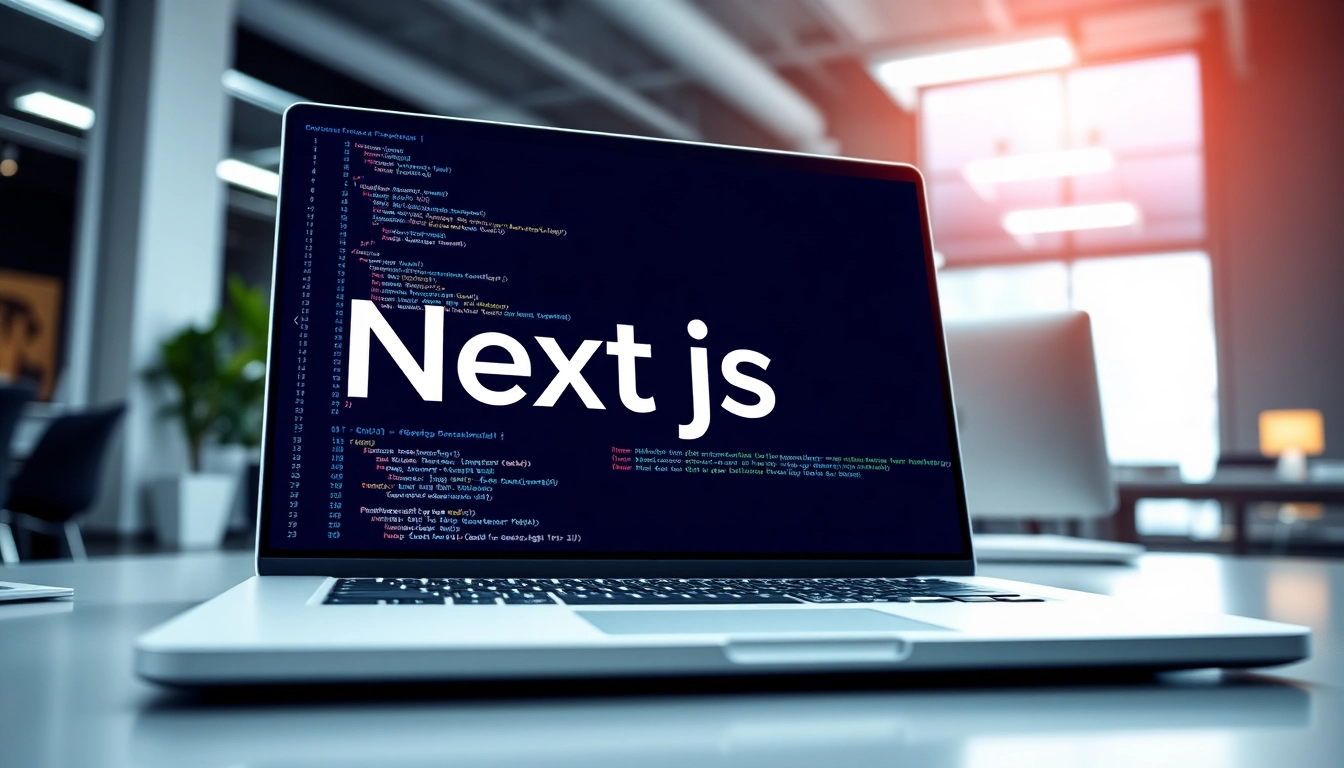Introduction to Next.js for Freelance Developers
In the rapidly evolving landscape of web development, staying ahead with cutting-edge technologies is essential for freelancers aiming to secure lucrative projects and expand their portfolios. Among the most prominent frameworks shaping modern web applications is Next.js. Known for its powerful capabilities in building fast, scalable, and SEO-friendly websites, Next.js has become a valuable skill for freelance developers seeking high-paying gigs and diverse opportunities. This article explores how embracing Next.js can elevate your freelance career, providing practical insights into setup, core features, best practices, and success stories.
Understanding Next.js and its Role in Modern Web Development
Next.js is an open-source React framework developed by Vercel that simplifies the process of building server-rendered and static websites. It extends React’s core functionalities by offering features such as automatic code splitting, server-side rendering (SSR), static site generation (SSG), built-in routing, and seamless API integrations. These capabilities enable developers to create high-performance web applications that are optimized for speed and search engine visibility, meeting the demands of modern users and clients alike.
For freelance developers, Next.js represents not just a technical tool but a strategic advantage. Companies and clients increasingly prioritize websites that load quickly, rank well on search engines, and provide smooth user experiences—areas where Next.js excels. As a result, freelancers proficient in Next.js can command premium rates, especially when delivering complex or large-scale projects such as e-commerce platforms, enterprise portals, and marketing websites.
Why Freelancers Should Embrace Next.js for Client Projects
The competitive freelance market demands versatile and future-proof skills. Adopting Next.js offers several compelling benefits:
- High Demand and Paid Opportunities: As businesses shift towards performance-centric web solutions, the demand for Next.js developers has surged, impacting project rates positively. Freelancers with Next.js expertise can often secure jobs paying between €600 and €1200 per day, especially for senior or specialized roles.
- Versatility in Project Types: From static websites and blogs to complex SaaS platforms and e-commerce sites, Next.js supports a broad range of application types. This flexibility allows freelancers to cater to various niches and expand their client base.
- Seamless Integration with Modern Tech Stacks: Next.js integrates smoothly with various APIs, headless CMS, cloud services, and other frontend frameworks, providing creative freedom and technical robustness.
- Faster Delivery and Better Client Satisfaction: Features like automatic code splitting and optimized rendering reduce load times, leading to happier clients and more repeat business.
Moreover, working with Next.js aligns with the trends observed in the job markets of major French cities such as Paris, Lyon, and Marseille, where digital innovation is accelerating rapidly.
Setting Up a Next.js Environment for Freelance Work
Getting started with Next.js is straightforward, making it accessible for freelancers of varying experience levels. Here are the essential steps to set up your development environment:
- Prerequisites: Ensure you have Node.js (version 14 or higher) installed on your machine. Node Package Manager (npm) or yarn is also necessary for managing dependencies.
- Initialize Your Project: Run
npx create-next-app@latest my-nextjs-projectoryarn create next-app my-nextjs-projectto scaffold a new project. - Development Server: Navigate into your project directory and run
npm run devoryarn devto launch a local development server. - Code Editor and Tools: Use Visual Studio Code or your preferred IDE, equipped with extensions for JavaScript and React development.
- Version Control: Initialize a Git repository to track your project changes and facilitate collaboration or deployment workflows.
From this foundation, you can start developing your client’s website, leveraging Next.js’s features to build a scalable, SEO-optimized application.
Core Features and Benefits of Next.js for Freelancers
Server-Side Rendering and Static Site Generation Explained
Next.js provides two primary rendering methods: SSR and SSG. SSR dynamically renders pages on each request, ideal for content that changes frequently. SSG pre-renders pages at build time, delivering lightning-fast static sites. Freelancers can choose the appropriate method based on project needs, balancing performance and freshness of content.
Optimizing Performance and SEO with Next.js
With built-in support for server-side rendering and fast static generation, Next.js significantly improves page load times—crucial for SEO rankings. Features like automatic code splitting and image optimization further enhance performance, reducing bounce rates and increasing visibility for client websites.
Incorporating APIs and Dynamic Content Seamlessly
Next.js simplifies fetching data from REST APIs, GraphQL, or serverless functions, integrating dynamic content effortlessly. Freelancers can build rich interactive sites, personalization features, and real-time updates while maintaining a clean and manageable codebase.
Practical Steps to Building Freelance Projects with Next.js
Designing Responsive and Accessible Next.js Applications
Client satisfaction hinges on accessibility and responsiveness. Use CSS frameworks like Tailwind CSS or styled-components for flexible styling. Ensure your applications are mobile-friendly and comply with WCAG standards, which is crucial for clients in sectors with strict accessibility requirements.
Managing State and Data Fetching Strategies
Effective state management can involve React’s built-in Context API, Redux, or third-party libraries like SWR for data fetching and caching. Choose strategies aligned with project complexity, ensuring optimal performance and developer productivity.
Deploying and Maintaining Next.js Sites in Freelance Contexts
Deployment options include Vercel (Next.js creators), Netlify, or custom cloud hosting. Set up CI/CD pipelines to automate testing and deployment, minimizing downtime and manual errors. Provide clients with documentation and training for ongoing maintenance, enhancing your reputation and future opportunities.
Best Practices and Challenges in Using Next.js Freelance
Common Pitfalls and How to Avoid Them
Freelancers often encounter challenges such as over-complicating architecture or neglecting performance optimization. To mitigate these, prioritize simplicity, adhere to best practices, and regularly update dependencies. Conduct performance audits using tools like Lighthouse to identify bottlenecks.
Leveraging Community Resources and Plugins
The Next.js community offers countless plugins, starter templates, and best practices. Utilize packages like next-optimized-images for image handling or next-i18next for multilingual support. Engaging with forums and open-source contributions can accelerate project development and foster professional growth.
Estimating Time and Budget for Next.js Projects Effectively
Accurate estimation relies on understanding project scope, complexity, and client expectations. For instance, simple static sites may take a few days, while complex SaaS applications could span several months. Factor in testing, deployment, and revisions to provide realistic quotes, ensuring profitability while maintaining client satisfaction.
Performance Metrics and Success Stories
Measuring SEO and User Engagement Improvements
Use tools like Google Analytics, Search Console, and performance audits to quantify improvements. Metrics such as page load time, bounce rate, and conversion rate reflect your project’s success. Sharing these metrics with clients can demonstrate your value and justify premium rates.
Case Studies: Freelance Projects Powered by Next.js
Consider a freelance project where a startup’s website migrated to Next.js. The result was a 40% increase in organic traffic and a 50% reduction in bounce rate within three months, directly linked to faster load times and better SEO. These tangible successes attract future clients and build your reputation in specialized tech markets.
Scaling Your Freelance Portfolio with Next.js Expertise
As you accumulate success stories, position yourself as a Next.js specialist within freelance platforms and your network. Offer workshops, write technical blogs, or contribute to open source. Differentiating yourself with advanced Next.js skills opens doors to high-paying, long-term projects across France’s major innovation hubs like Paris, Lyon, and Nice.













